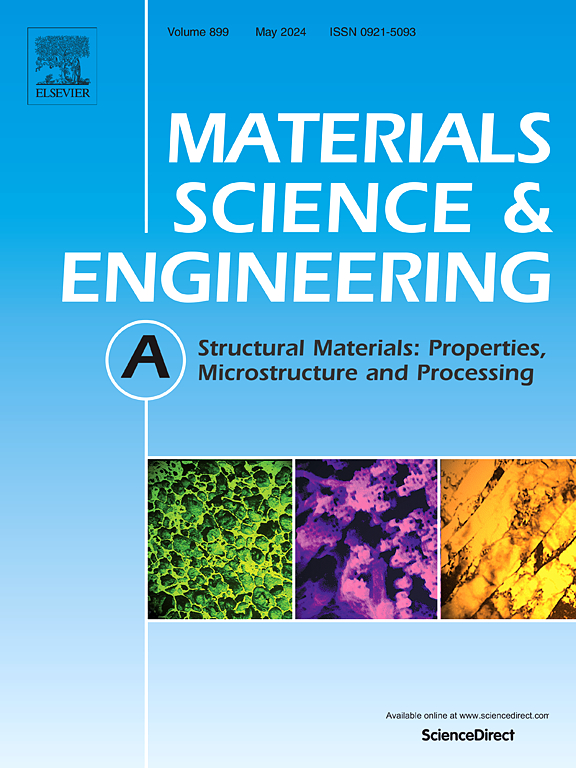Design and characterisation of new low-alloyed alumina forming ferritic/martensitic steels
IF 7
2区 材料科学
Q1 MATERIALS SCIENCE, MULTIDISCIPLINARY
引用次数: 0
Abstract
New efficient energy generation systems require materials capable of withstanding aggressive environments. The Cr-rich oxides formed by commercial stainless steels are not protective enough, so alumina (Al2O3) forming steels such as alumina-forming austenitic (AFA) steels and FeCrAl have been proposed as possible materials. However, they are prone to irradiation swelling or exhibit poor creep resistance. This study aims to develop a new kind of alloy, an Alumina Forming Ferritic-Martensitic steel, which combines the superior oxidation resistance from an alumina scale with the creep and irradiation swelling resistance of a martensitic structure. Thermodynamic simulations guided the alloy design of five Fe-Cr-Ni-Al compositions through a powder metallurgy route, ending with Spark Plasma Sintering of solid samples. EBSD and TEM analysis of the samples showed martensite in 4 out of the 5 sintered alloys, with various levels of retained austenite or ferrite in their structures. Tensile and small punch tests from room temperature to 500 °C demonstrated comparable mechanical properties to other AFA steel and to T91 and 316L, candidate materials for nuclear applications. After exposure to air at 800 °C for 500 h, the designed alloys formed protective aluminium oxide scales with corrosion rates similar to 316L and orders of magnitude better than T91. The results show that the developed alloys are promising for components subjected to aggressive environments and elevated temperatures.
新型低合金氧化铝成形铁素体/马氏体钢的设计与表征
新的高效能源生产系统需要能够承受恶劣环境的材料。工业不锈钢所形成的富铬氧化物保护作用不足,因此氧化铝形成钢(Al2O3)如氧化铝形成奥氏体钢(AFA)和FeCrAl被提出作为可能的材料。然而,它们容易发生辐照膨胀或表现出较差的抗蠕变能力。本研究旨在开发一种新的合金——氧化铝成形铁素体-马氏体钢,它结合了氧化铝鳞片优越的抗氧化性能和马氏体组织的抗蠕变和抗辐照膨胀性能。热力学模拟指导了五种Fe-Cr-Ni-Al成分的合金设计,通过粉末冶金路线,以放电等离子烧结固体样品结束。样品的EBSD和TEM分析表明,5种烧结合金中有4种存在马氏体,并在其组织中保留了不同程度的奥氏体或铁素体。从室温到500°C的拉伸和小冲压试验表明,与其他AFA钢以及T91和316L(核应用候选材料)的机械性能相当。在800°C的空气中暴露500 h后,所设计的合金形成了保护性氧化铝鳞片,其腐蚀速率与316L相似,比T91好几个数量级。结果表明,所研制的合金在耐腐蚀环境和高温环境下具有良好的应用前景。
本文章由计算机程序翻译,如有差异,请以英文原文为准。
求助全文
约1分钟内获得全文
求助全文
来源期刊

Materials Science and Engineering: A
工程技术-材料科学:综合
CiteScore
11.50
自引率
15.60%
发文量
1811
审稿时长
31 days
期刊介绍:
Materials Science and Engineering A provides an international medium for the publication of theoretical and experimental studies related to the load-bearing capacity of materials as influenced by their basic properties, processing history, microstructure and operating environment. Appropriate submissions to Materials Science and Engineering A should include scientific and/or engineering factors which affect the microstructure - strength relationships of materials and report the changes to mechanical behavior.
 求助内容:
求助内容: 应助结果提醒方式:
应助结果提醒方式:


